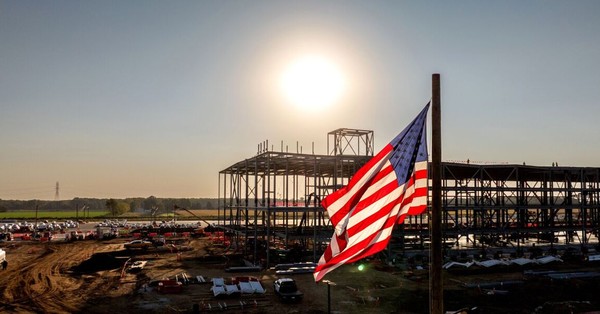AT&T 5G goes live in NYC’s Joralemon Street Tunnel
AT&T has gone live on Boldyn Networks’ neutral-host infrastructure in New York’s Joralemon Street tunnel, with G line tunnel segments next in the rollout.
Where AT&T 5G is now available underground
AT&T customers can now access 5G mobile service through the 1.1-mile (1.8 km) Joralemon Street tunnel, the oldest underwater subway tunnel in New York City, which links the 4/5 lines between Borough Hall in Brooklyn and Bowling Green in Manhattan. The build is part of a multi-year program led by Boldyn (through its Transit Wireless unit) to extend cellular and Wi‑Fi across stations and tunnels in the Metropolitan Transportation Authority (MTA) network. The G line, spanning Court Square in Queens to Hoyt-Schermerhorn Streets in Brooklyn, is next to receive tunnel coverage. This follows earlier phases that connected the 42nd Street Shuttle tunnels and an L line segment between Bedford Avenue and 1st Avenue; all underground stations already have cellular and Wi‑Fi access.
Why subway 5G coverage matters for riders and safety
Subway connectivity has shifted from convenience to critical infrastructure for safety, accessibility, and productivity. A live neutral-host platform in high-traffic Brooklyn-Manhattan corridors gives riders reliable service, enables real-time transit communications, and supports emergency response—while signaling momentum for universal coverage. AT&T’s first-mover status sets a competitive benchmark; other national carriers (Verizon and T‑Mobile) are expected to follow as on-boarding progresses across the system.
Next tunnels and timelines for NYC subway coverage
Boldyn’s mandate covers uninterrupted coverage across 418 route miles in a 24/7, high-density, subterranean environment—among the most challenging radio settings globally. The roadmap prioritizes previously unconnected lines, expands capacity where data demand is highest, and brings all national operators onto a shared infrastructure. For the MTA and riders, the program is funded without direct cost to passengers via a long-term concession model.
How neutral-host networks are transforming urban connectivity
Neutral-host infrastructure is becoming the preferred delivery model for hard-to-wire public spaces like subways, streets, and venues.
How the MTA neutral-host model operates
Under the MTA agreement, Boldyn designs, builds, and operates a shared network in stations and tunnels that hosts multiple carriers on common radio, fiber, and power assets. Mobile operators connect their core networks to this platform, gaining coverage and capacity without duplicating builds. This aligns incentives: agencies get universal service and lifecycle management; carriers reduce capex/opex and accelerate time-to-service; riders benefit from consistent experience across lines and stations.
Technology: DAS, small cells, fiber and C-band
The system blends distributed antenna systems (DAS) and small cells, fed by high-count fiber backhaul and designed for multi-operator, multi-band service spanning low-band LTE/5G through midband 5G (including C-band). Engineering complexity includes RF propagation in narrow tubes, power and battery backup at depth, interference mitigation for multi-tenant radios, and strict safety protocols for work in right-of-way. Performance hinges on capacity planning during peaks, device diversity underground, and stringent SLAs for uptime and incident response.
Business impact for carriers and transit agencies
Neutral-host arrangements spread costs and simplify upgrades (e.g., adding new 5G bands) while centralizing operations. They also enable faster deployment cycles and reduce street or service disruption. For agencies, concession-based models monetize right-of-way and introduce modernization without tapping fare revenue. For operators, shared infrastructure turns unfriendly build zones into predictable, scalable coverage with measurable ROI tied to churn reduction and usage growth.
Boldyn’s strategy across subways, streets, and ports
The New York milestone is part of Boldyn’s dual strategy spanning neutral-host urban networks and managed private 5G for industry.
London rollout: multi-operator 5G small cells on TfL assets
In London, Boldyn has surpassed 200 live small cells by leveraging a 20-year concession to use Transport for London ducts, fibre, and street furniture. The approach shortens order-to-activation cycles and reduces deployment cost and disruption, while supporting multi-operator 5G densification in high-footfall zones such as major rail hubs and commercial districts. The same footprint underpins smart-city use cases—environmental sensing, public safety cameras, and community connectivity—by reusing shared fibre and power access.
Gran Canaria: managed private 5G for port automation
At OPCSA, Gran Canaria’s largest container terminal, Boldyn is delivering a managed private 5G network built on Nokia’s platform to digitalize yard and crane operations. The deployment connects RTG and STS cranes wirelessly (avoiding costly civil works), enables connected-worker workflows, and supports telemetry and video to reduce downtime and improve safety. As capabilities evolve, the architecture lays groundwork for more automation, including remote crane operations and condition-based maintenance.
Why Boldyn’s dual strategy matters
The same competencies—deep fibre access, radio engineering in complex environments, and multi-stakeholder operations—translate across public and private domains. For enterprises, managed private 5G lowers adoption risk and speeds outcomes. For cities and transit agencies, neutral-host concessions compress timelines and harmonize multi-operator service delivery.
What carriers, agencies, and enterprises should do now
Carriers, agencies, and enterprises can capitalize on these builds with practical steps that reduce risk and accelerate value.
Actions for mobile operators and MVNOs
Prioritize onboarding to neutral-host platforms along critical corridors; validate device and feature parity underground (VoLTE/VoNR, E911/EWS, Wi‑Fi offload). Align spectrum strategy—especially midband 5G—with tunnel RF plans to avoid congestion. Negotiate performance SLAs for peak-hour capacity and rapid incident response. Plan for future enhancements such as 5G SA transition, traffic steering, and potential network slicing for priority services.
Actions for transit and municipal owners
Use concession models that balance revenue, coverage obligations, and upgrade paths. Establish governance for safety, cybersecurity, and public safety integration (including interoperable services and priority access). Leverage shared fibre for adjacent smart-city programs to maximize total ROI and minimize additional works.
Actions for ports, logistics, and industrials
Identify high-ROI private 5G use cases—connected workers, mobile assets, video analytics, and telemetry—and consider managed service models to speed time-to-value. Require clear KPIs (latency, uptime, coverage), device certification plans, and integration with OT systems. Design for scalability from pilot zones to full terminal rollout.
Key risks and what to watch
Execution will hinge on multi-operator alignment, operational resilience, and the pace of 5G feature adoption underground.
Timeline: onboarding all operators
Monitor when additional carriers join each tunnel segment and how quickly multi-band, multi-operator parity is achieved. Customer experience will depend on consistent activation across lines and consistent device performance.
Technology evolution to 5G SA and edge
Track migration to 5G standalone cores, support for advanced features (uplink optimization, URLLC), and any introduction of edge compute for transit applications (e.g., video analytics). These will influence capacity planning and service differentiation.
Operational resilience and cybersecurity
Key risks include power redundancy at depth, interference across shared assets, maintenance access in a 24/7 railway, and cybersecurity in multi-tenant environments. Agencies and providers should stress-test incident playbooks and ensure clear responsibility boundaries across stakeholders.
Bottom line: AT&T’s activation with Boldyn in the Joralemon tunnel is a meaningful step toward systemwide subway connectivity, exemplifying how neutral-host and private 5G strategies are converging to modernize mobility, urban infrastructure, and industrial operations.








































